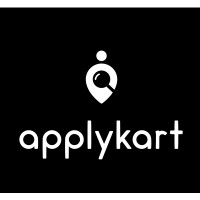Home How to Answer “What Are Your Short-Term and Long-Term...
Freshers' Guide to Self-Introduction: Top 6 Tips With Examples for Success in 2024

A thought that keeps lurking in the mind of jobseekers—whether you’re a seasoned pro or just starting out—we’ve all had that moment before an interview where we think,
“How do I introduce myself?” And trust me, you’re not alone! It’s totally understandable because how you kick off that conversation can really make or break your shot at the job.
Nailing your self-introduction for an interview is key to grabbing the hiring manager’s attention and setting a positive vibe for the rest of the interview.
At ApplyKart, we’re committed to helping you land that dream job, and mastering your introduction is a key step.
And if you’re looking to make a great first impression and stand out, this article’s exactly what you need!
Here’s a step-by-step guide on how to introduce yourself during an interview to make a strong, positive impact.
1. Start with a Smile and a Greeting
First impressions count! Your demeanor when walking into the room speaks volumes. Start your self-introduction with a warm, professional greeting.
Example:
“Good morning, thank you for giving me the opportunity to interview for this position today.”
This shows politeness and enthusiasm right from the start.
And then, foremost, utilise all this information to frame your answer during the interview and highlight your unique value that adds to your team.
By understanding the job, you can actually depict how suitable you are for the role.
2. State Your Name and Give a Brief Background
One of the first things an interviewer expects in a self-introduction is your name and a quick summary of who you are.
This helps set the stage for the rest of the interview. Keep it concise and relevant to the position you’re applying for.
Example:
“My name is Sarah Kapoor, and I’ve recently graduated with a degree in Marketing from XYZ University.”
This simple introduction lets the interviewer know your name and background right away, making it easier for them to follow your story.
3. Mention Your Experience or Education
If you’re a seasoned professional, focus on your past work experiences. For freshers, talking about your education and any internships or projects is the way to go.
This is where you begin to connect your background with the job you’re applying for.
Example (Experienced Professional):
“Hello, I’m Alex. In my previous role as a project manager, I successfully led a cross-functional team,
to deliver a complex software implementation ahead of schedule, resulting in a 20% increase in productivity for the client.”
Example (Fresher):
“During my time at XYZ University, I led a marketing project where I conducted extensive research on consumer behavior, which gave me valuable insights into digital marketing trends.”
This part of your self-introduction for an interview should highlight your most relevant experiences or education that aligns with the job you are seeking.
4. Showcase Your Skills and Strengths
Your self-introduction is an opportunity to present the skills that make you the right fit for the job. Think about what skills you have that match the requirements in the job description.
Highlight those that are directly relevant to the role.
Example:
“I am highly skilled in project management, data analysis, and team collaboration. In my last role, I managed a cross-functional team to deliver complex projects on time and within budget.”
By aligning your skills with the company’s needs, you’re showing that you not only have the qualifications but also the strengths that make you a strong candidate.
5. Express Your Enthusiasm for the Role
Why are you excited about this role? The interviewer wants to know that you’re genuinely interested in the position.
Expressing your enthusiasm shows that you’ve done your research and are eager to contribute.
Example:
“I’ve always admired XYZ company for its innovative approach to tech solutions, and I’m excited about the opportunity to contribute to your growing marketing team.
I believe my experience in digital marketing would allow me to make a significant impact here.”
This is the point where you link your personal and professional journey to the company you’re interviewing for, showing that you’re not just looking for any job but for this job.
6. Finish With a Strong Closing Statement
Wrap up your self-introduction with a closing statement that reinforces your interest in the role and invites further conversation.
This is a subtle way to give the interviewer a chance to ask follow-up questions or move on to the next part of the interview.
Example:
“I’m really excited about the chance to work with ABD Corp. and am confident that my skills and experience align with the goals of your team.
I’d love to discuss how I can contribute to your success.”
A powerful closing statement not only shows confidence but also gives the interviewer a positive last impression of your introduction.
Bonus Tips for a Perfect Self-Introduction
- Practice Makes Perfect: Rehearse your self-introduction until it feels natural. This way, you’ll sound confident and poised during the actual interview.
- Tailor It to the Job: Every interview is different. Make sure your self-introduction reflects the specific role and company you’re applying for.
- Keep It Short and Sweet: Aim for a 1-2 minute self-introduction. Any longer and you risk losing the interviewer’s attention.
- Non-Verbal Cues Matter: Your body language says a lot. Maintain eye contact, sit up straight, and project positive energy.
- Adapt to Virtual Interviews: In a virtual setting, ensure you have a professional background and that your voice is clear. Adjust your camera so it’s at eye level and look directly into it while speaking.
Conclusion
Your self-introduction for an interview is your first chance to make a great impression, and with ApplyKart, we’re here to ensure you’re prepared every step of the way.
By keeping it professional, relevant, and engaging, you’ll capture your interviewer’s attention from the start.
Remember, a great self-introduction isn’t just about listing your credentials; it’s about telling your story in a way that connects with the interviewer and shows why you’re the perfect fit for the role.
So, practice your introduction, tailor it to the job, and walk into your interview with confidence. Good luck!
Related articles
What Makes You Interested for This Role
Home Crafting the Perfect Answer to “Why Are You Interested...
How To Write An Application For Teaching Job?
Home Craft the Perfect Teaching Job Application with These Examples...
Writing A Perfect Cover Letter With Samples Included
Home How to Craft the Perfect Cover Letter Step by...




